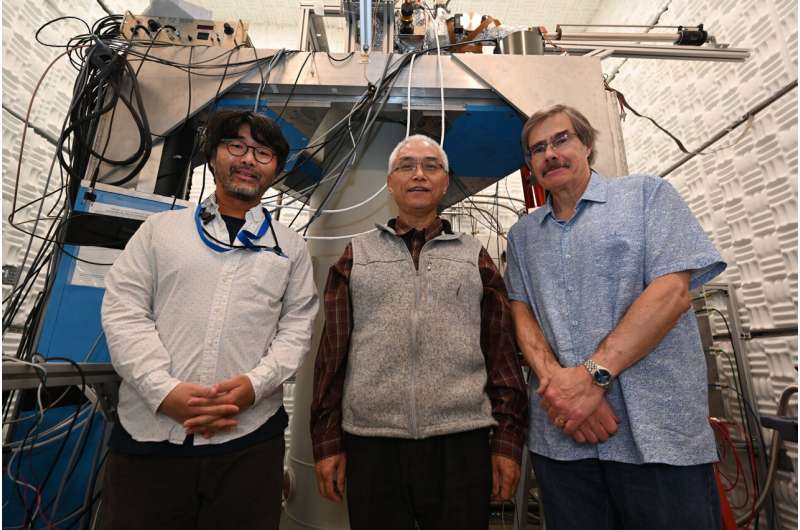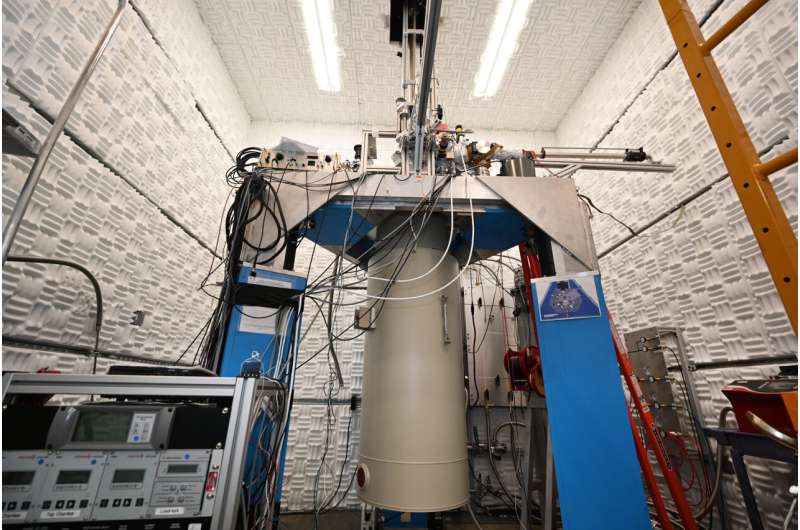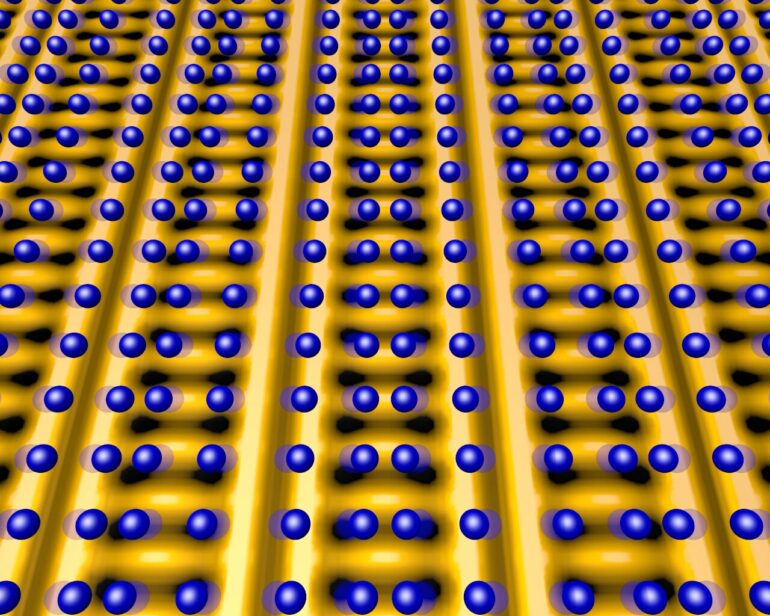What makes some materials carry current with no resistance? Scientists are trying to unravel the complex characteristics. Harnessing this property, known as superconductivity, could lead to perfectly efficient power lines, ultrafast computers, and a range of energy-saving advances. Understanding these materials when they aren’t superconducting is a key part of the quest to unlock that potential.
“To solve the problem, we need to understand the many phases of these materials,” said Kazuhiro Fujita, a physicist in the Condensed Matter Physics & Materials Science Department of the U.S. Department of Energy’s Brookhaven National Laboratory. In a new study just published in Physical Review X, Fujita and his colleagues sought to find an explanation for an oddity observed in a phase that coexists with the superconducting phase of a copper-oxide superconductor.
The anomaly was a mysterious disappearance of vibrational energy from the atoms that make up the material’s crystal lattice. “X-rays show that the atoms vibrate in particular ways,” Fujita said. But as the material is cooled, the X-ray studies showed, one mode of the vibrations stops.
“Our study explored the relationship between the lattice structure and the electronic structure of this material to see if we could understand what was going on,” Fujita said.
The Brookhaven team used a tool called a spectroscopic imaging scanning tunneling microscope (SI-STM). By scanning the surface of the layered material with trillionths-of-a-meter precision, they could map the atoms and measure the distances between them—while simultaneously measuring the electric charge at each atomic-scale location.
The measurements were sensitive enough to pick up the average positions of the atoms when they were vibrating—and showed how those positions shifted and became locked in place when the vibrations stopped. They also showed that the anomalous vibrational disappearance was directly linked to the emergence of a “charge density wave”—a modular distribution of charge density in the material.

Kazuhiro Fujita (left) with Brookhaven Lab co-authors Genda Gu and John Tranquada, all members of Brookhaven Lab’s Condensed Matter Physics and Materials Science Department, in front of the spectroscopic imaging scanning tunneling microscope (SI-STM) used in this study. © Brookhaven National Laboratory
The electrons that make up the charge density wave are localized, meaning in fixed positions—and separate from the more mobile electrons that eventually carry the current in the superconducting phase, Fujita explained. These localized electrons form a repeating pattern of higher and lower densities that can be visualized as ladders laying side-by-side (see diagram). It’s the appearance of this pattern that distorts the normal vibrations of the atoms and shifts their positions along the direction of the “rungs.”
“As the temperature goes down and the charge density wave (CDW) emerges, the vibrational energy goes down,” Fujita said. “By measuring both charge distribution and atomic structure simultaneously, you can see how the emergence of the CDW locks the atoms in place.”
“This result implies that, as the atoms vibrate, the charge density wave interacts with the lattice and quenches the lattice. It stops the vibrations and distorts the lattice,” Fujita said.

The spectroscopic imaging scanning tunneling microscope (SI-STM) used in this study at Brookhaven National Laboratory. © Brookhaven National Laboratory
So that’s one more clue about how two of the characteristics of one phase of a superconducting material couple together. But there’s still a lot to uncover about these promising materials, Fujita said.
“There are many variables. Electrons and the lattice are just two. We have to consider all of these and how they interact with each other to truly understand these materials,” he said.
More information:
Zengyi Du et al, Periodic Atomic Displacements and Visualization of the Electron-Lattice Interaction in the Cuprate, Physical Review X (2023). DOI: 10.1103/PhysRevX.13.021025
Provided by
Brookhaven National Laboratory
Citation:
‘Charge density wave’ linked to atomic distortions in would-be superconductor (2023, May 17)



